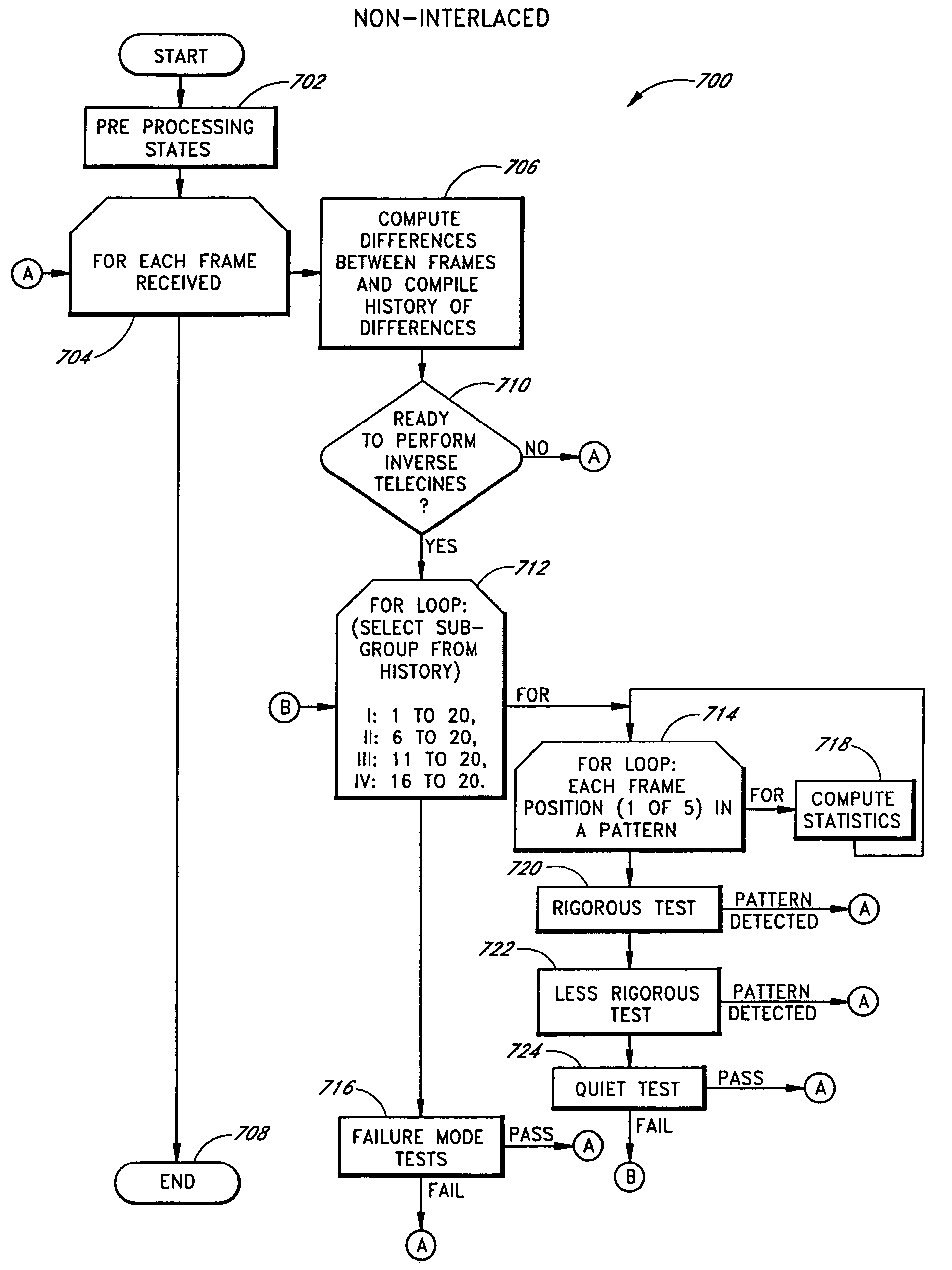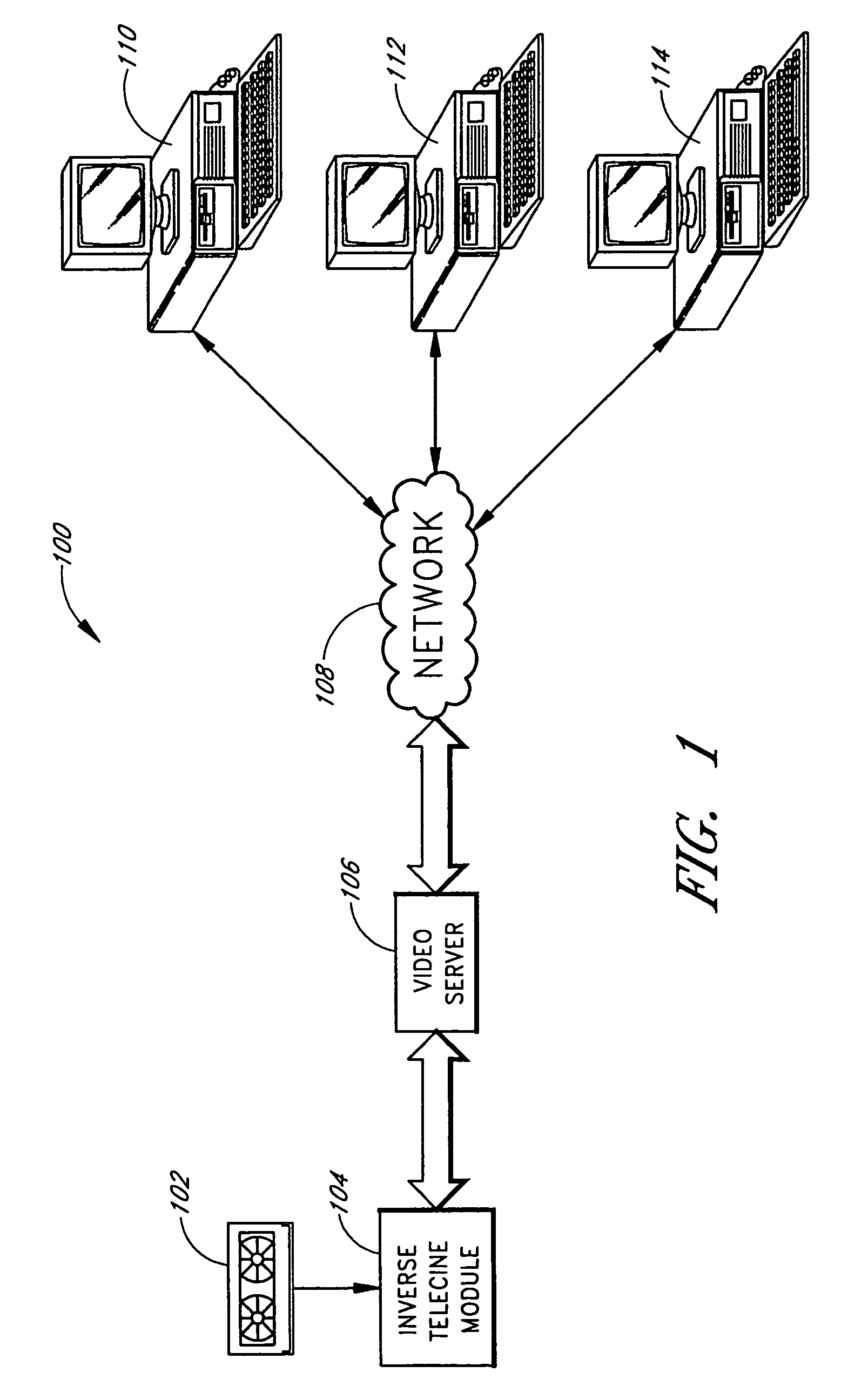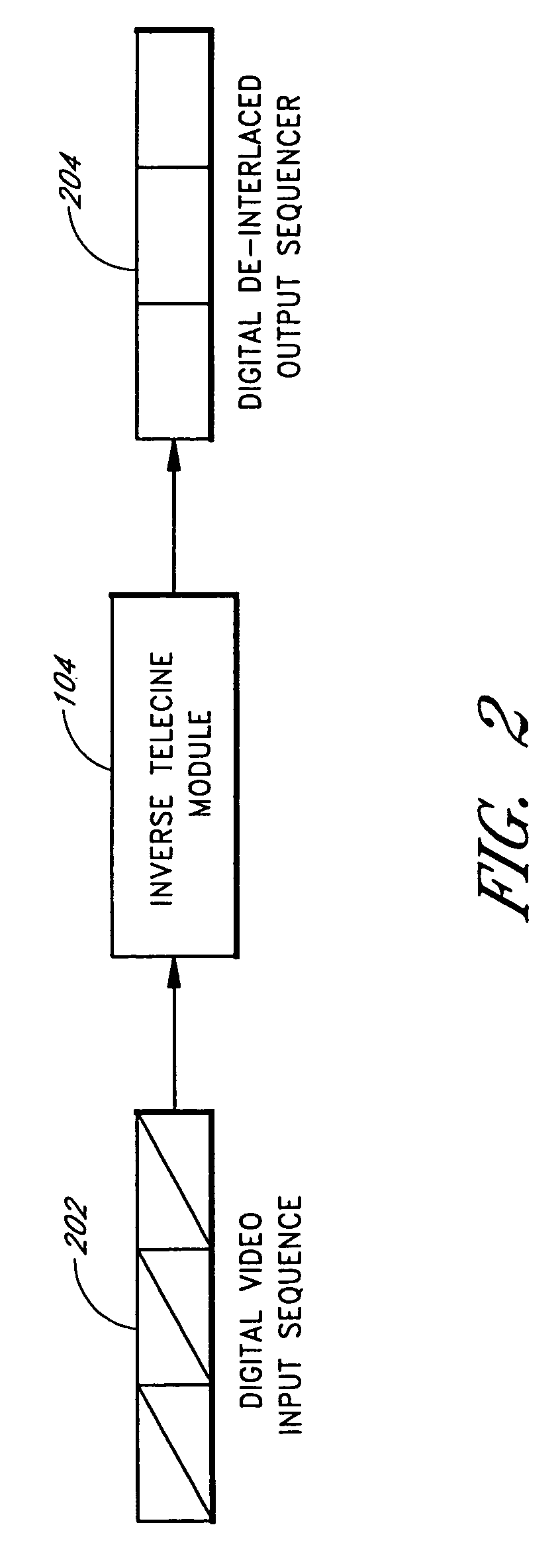Automated inverse telecine conversion
a technology of telecine and inverse, applied in the field of processing image sequences, can solve the problems of jittery motion, duplicate frames, and disparate frames interleaving, and achieve the effect of little or no loss of information
- Summary
- Abstract
- Description
- Claims
- Application Information
AI Technical Summary
Benefits of technology
Problems solved by technology
Method used
Image
Examples
Embodiment Construction
[0052]Although this invention will be described in terms of certain preferred embodiments, other embodiments that are apparent to those of ordinary skill in the art, including embodiments which do not provide all of the benefits and features set forth herein, are also within the scope of this invention. Accordingly, the scope of the present invention is defined only by reference to the appended claims.
[0053]Throughout the following detailed description, the term “Web site” is used to refer to a user-accessible network site that implements the basic World Wide Web standards for the coding and transmission of hypertextual documents. These standards currently include HTML (the Hypertext Markup Language) and HTTP (the Hypertext Transfer Protocol). It should be understood that the term “site” is not intended to imply a single geographic location, as a Web or other network site can, for example, include multiple geographically distributed computer systems that are appropriately linked tog...
PUM
 Login to View More
Login to View More Abstract
Description
Claims
Application Information
 Login to View More
Login to View More - R&D
- Intellectual Property
- Life Sciences
- Materials
- Tech Scout
- Unparalleled Data Quality
- Higher Quality Content
- 60% Fewer Hallucinations
Browse by: Latest US Patents, China's latest patents, Technical Efficacy Thesaurus, Application Domain, Technology Topic, Popular Technical Reports.
© 2025 PatSnap. All rights reserved.Legal|Privacy policy|Modern Slavery Act Transparency Statement|Sitemap|About US| Contact US: help@patsnap.com



